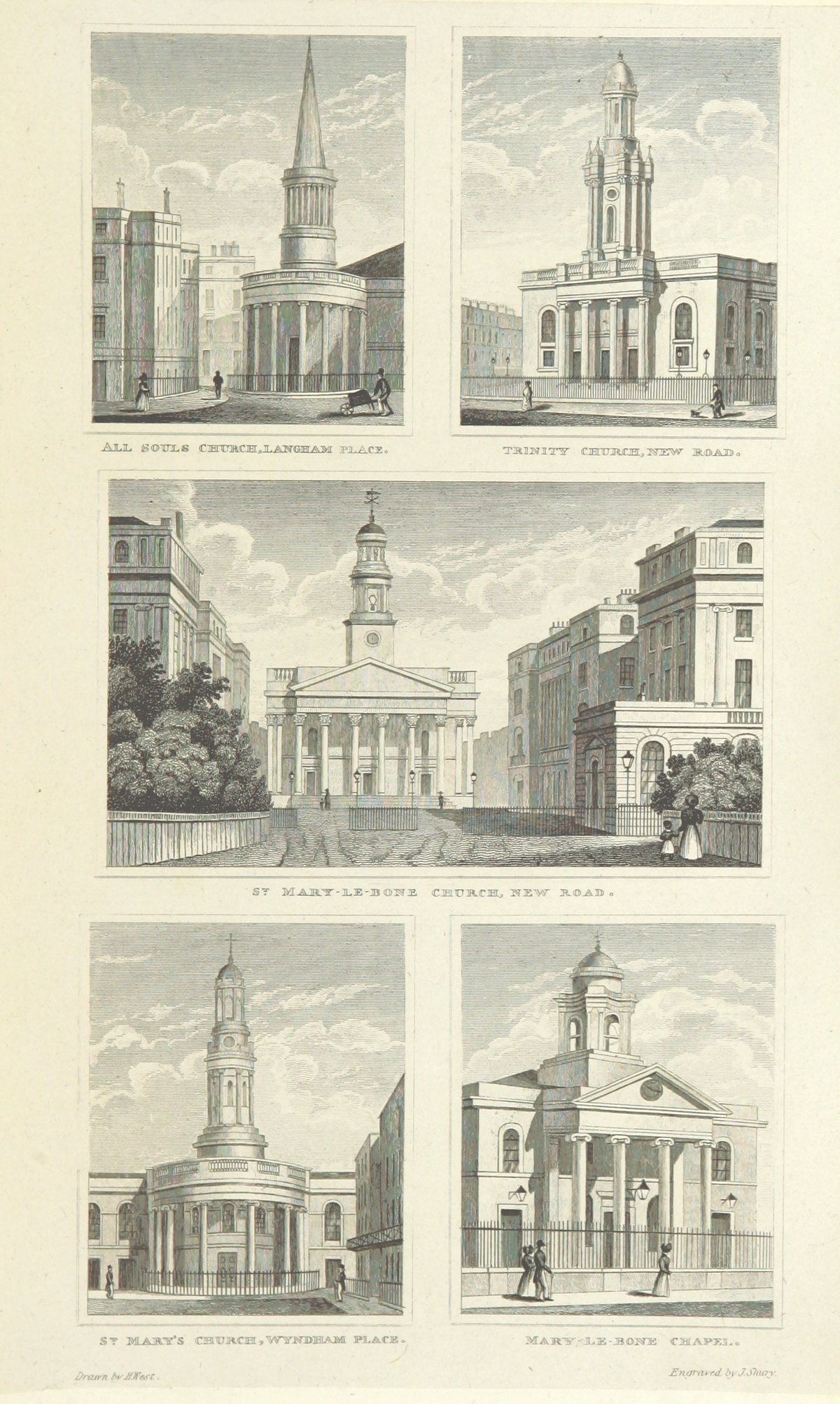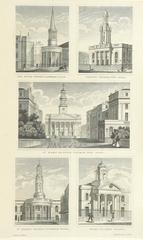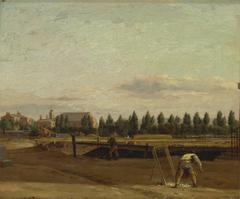
St Marylebone Parish Church: Visiting Hours, Tickets, and Historical Significance in London
Date: 14/06/2025
Introduction
St Marylebone Parish Church, located in the heart of London’s Marylebone district, stands as a testament to nearly a millennium of religious, architectural, and social history. This guide provides a comprehensive overview of its origins, architectural evolution, cultural significance, and up-to-date visitor information, including opening hours, ticketing, accessibility, and nearby attractions. Whether you are a history enthusiast, architecture lover, or first-time visitor, this article will help you plan a meaningful and informed visit to one of London’s most fascinating historical sites (Victorian Web; Wikipedia).
Table of Contents
- Early Origins and Medieval Foundations
- Tudor, Stuart, and Georgian Eras
- Regency Grandeur: The Present Church
- Architectural and Artistic Highlights
- Cultural and Religious Significance
- Notable Events and Figures
- Wartime and Modern Transformations
- Visiting St Marylebone Parish Church
- Community and Cultural Engagement
- Nearby Attractions and Travel Tips
- Frequently Asked Questions (FAQ)
- References
Early Origins and Medieval Foundations
The origins of St Marylebone Parish Church date back to the early 12th century. The first church, dedicated to St John the Evangelist, was likely part of a priory near the present-day Marble Arch. The name “Marylebone” evolved from “St Mary by the bourne,” referring to the church’s dedication to the Virgin Mary and its location near the River Tyburn (Wikipedia).
By 1400, the original building had become dilapidated. The Bishop of London authorized its demolition and the construction of a new church closer to the growing settlement, at what is now the north end of Marylebone High Street. This second church was dedicated to St Mary, and the area gradually became known as St Marylebone.
Tudor, Stuart, and Georgian Eras
The second church, completed in the early 15th century, became a hub of community life. Notably, Francis Bacon was married here in 1606, and the church interior was immortalized by William Hogarth in his painting “A Rake’s Progress” (Victorian Web). The parish gained prominence during the Tudor and Stuart eras, eventually passing into the hands of the Crown under Henry VIII and later developed by the Holles and Harley families in the 18th century (LWMFHS PDF).
By 1740, the second church was replaced with a third structure to accommodate the expanding population. This Georgian building stood until the early 19th century, serving as a focal point for Marylebone’s rapid urbanization amidst the development of new estates and Regent’s Park.
Regency Grandeur: The Present Church
The current St Marylebone Parish Church—the fourth on this historic site—was constructed between 1813 and 1817. Designed by Thomas Hardwick, it exemplifies Regency neoclassical architecture, with a grand portico supported by Ionic columns and a spacious interior originally seating 3,000 people (National Churches Trust). Notable enhancements include a Roman Renaissance-style frescoed apse added in 1884 and a world-class Rieger Orgelbau organ installed in 1987.
The church’s façade, constructed from Portland stone, and its landmark steeple remain prominent features in the Marylebone landscape. The interior features tall arched windows, decorative plasterwork, and galleries designed to accommodate large congregations (St Marylebone Heritage).
Architectural and Artistic Highlights
- Roman Renaissance Apse: Added in 1884, this frescoed sanctuary is a focal point of the church (National Churches Trust).
- Holy Family Chapel: Houses the altar before which Robert Browning and Elizabeth Barrett were married, as well as art by Benjamin West.
- Historic Organ: The 1987 Rieger Orgelbau organ is renowned internationally for its sound and craftsmanship.
- Memorials and Chandeliers: Commemorate parishioners and notable historical figures; chandeliers from the former St Marylebone Town Hall enrich the interior’s grandeur.
- Bells: Dating to 1676, the church’s bells continue to mark significant community events (London Kensington Guide).
Cultural and Religious Significance
St Marylebone Parish Church has played a central role in the spiritual and social life of its community for centuries. Its archives, with records dating back to the 17th century, are a resource for genealogists and historians (LWMFHS PDF). The church has also served as the mother church for numerous parishes in north-central London (St Marylebone Parish Church).
Notable Events and Figures
- Francis Bacon: Married at the church in 1606 (Victorian Web).
- Robert Browning and Elizabeth Barrett: Their secret wedding took place here in 1846; the altar is preserved in the Holy Family Chapel (Wikipedia).
- Sir John Stainer: Composed “The Crucifixion” for the church choir, a tradition still observed.
- Charles Dickens: Lived nearby; his son was baptized here, an event fictionalized in “Dombey and Son” (National Churches Trust).
- William Hogarth: Illustrated the church interior in his celebrated series “A Rake’s Progress.”
The churchyard, now the Garden of Rest, contains memorials to several notable figures, including members of the Bentinck family and Charles Wesley (Living London History).
Wartime and Modern Transformations
During WWII, bomb damage destroyed the church’s original stained glass, but fragments were incorporated into new windows during postwar restorations (National Churches Trust). In the 1980s, the crypt was converted into the St Marylebone Healing and Counselling Centre and an NHS GP surgery, reflecting the church’s ongoing commitment to holistic care (St Marylebone Parish Church).
Recent restoration campaigns, supported by the Heritage Lottery Fund, have modernized facilities while preserving the church’s heritage (St Marylebone Parish Church).
Visiting St Marylebone Parish Church
Hours and Entry
- Monday–Friday: 9:00 am – 5:30 pm
- Saturday: 9:00 am – 5:00 pm
- Sunday: 8:00 am – 4:00 pm
Entry is free, though donations are appreciated and help support restoration and community initiatives (A Church Near You).
Guided Tours
Free guided tours are offered on select dates and can be booked in advance via Eventbrite or the church’s website. Tours last around 45 minutes and explore the church’s history, architecture, and notable personalities.
Accessibility
- Step-free access and accessible restrooms are available.
- Staff and volunteers are ready to assist visitors with mobility needs.
- Contact the parish office in advance for specific arrangements.
Location and Transport
- Address: 17 Marylebone Road, London NW1 5LT (A Church Near You).
- Tube: Baker Street and Regent’s Park stations are within a 5–10 minute walk.
- Rail: Marylebone Station is nearby.
- Bus: Several routes serve Marylebone Road.
- Nearby landmarks: Regent’s Park, Madame Tussauds, and the Wallace Collection (The Travel Shots).
Community and Cultural Engagement
St Marylebone Parish Church is a hub for worship, education, and community support:
- Services: Regular Sunday and weekday services, open to all.
- Schools: Affiliated with The St Marylebone Church of England School and Bridge School.
- Health and Wellbeing: The crypt houses the Healing and Counselling Centre and NHS Marylebone Health Centre (St Marylebone Parish Church Community Support).
- Events: The church hosts concerts, art exhibitions (such as “Women Change Makers”), and community gatherings. The Cabbages & Frocks market is held every Saturday on the church grounds (London x London: Cabbages & Frocks).
Nearby Attractions and Travel Tips
Enhance your visit by exploring:
- Regent’s Park: Royal Park with gardens and the Open Air Theatre.
- The Wallace Collection: Renowned art museum.
- Madame Tussauds: World-famous wax museum.
- Sherlock Holmes Museum: On Baker Street.
Marylebone Village offers boutique shops, cafés, and a vibrant local atmosphere (A Lady in London).
Frequently Asked Questions (FAQ)
Q: What are the visiting hours?
A: Monday–Friday: 9:00 am–5:30 pm; Saturday: 9:00 am–5:00 pm; Sunday: 8:00 am–4:00 pm.
Q: Is there an entry fee?
A: No, entry is free; donations are welcomed.
Q: Are guided tours available?
A: Yes, on select dates. Book in advance via Eventbrite.
Q: Is the church wheelchair accessible?
A: Yes, with step-free access and accessible restrooms.
Q: Can I attend services?
A: Yes, all are welcome at regular services.
Q: Are special events or concerts held here?
A: Yes, the church is a popular venue for concerts, art exhibitions, and community events. Check the What’s On section of the church’s website for upcoming events.
Q: Is parking available?
A: Limited street parking; public transport is recommended.
References and Further Reading
- Victorian Web
- Wikipedia
- National Churches Trust
- St Marylebone Heritage
- London Kensington Guide
- LWMFHS PDF
- A Church Near You
- Eventbrite
- St Marylebone Parish Church Community Support
- London x London: Cabbages & Frocks
- Living London History
- The Travel Shots
- A Lady in London
Plan Your Visit
Experience centuries of London history at St Marylebone Parish Church. For up-to-date information on visiting hours, events, and guided tours, visit the official website. Download the Audiala app for self-guided tours and event notifications. Follow the church and Audiala on social media for the latest news and visitor tips.
Consider adding photos with descriptive alt text, such as “St Marylebone Parish Church Regency façade,” “Roman Renaissance frescoed apse at St Marylebone Parish Church,” and “Rieger Orgelbau organ inside St Marylebone Parish Church.” An interactive map will help visitors plan their journey and locate nearby attractions.





















































































































































































































































